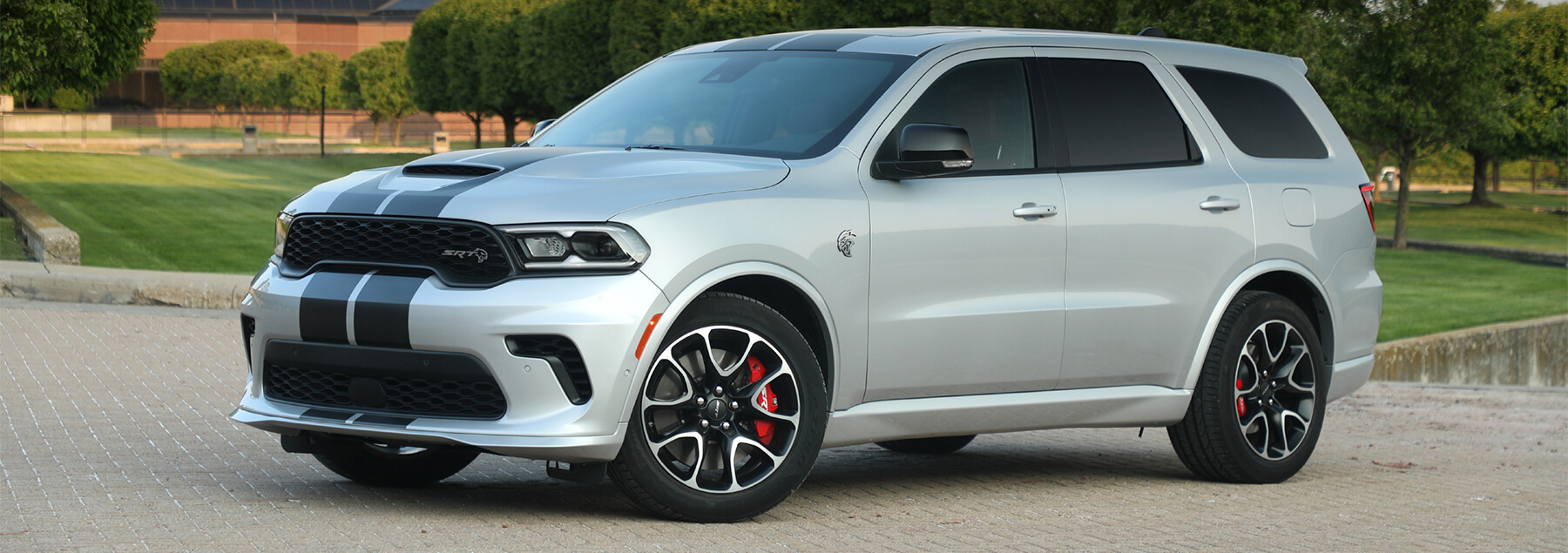Dodge is an American automobile manufacturer based in Michigan, USA, and has a long-standing reputation for producing luxurious sport utility vehicles (SUVs).
Known for their comfort, reliability, and practicality, Dodge SUVs have allowed the company to maintain a strong position in the competitive SUV market. These qualities have contributed to Dodge’s sustained success and popularity among drivers.
1. Dodge Durango
One of the most notable models is the 2018 Dodge Durango, which earned a high reliability score of 8.5 out of 10.
It was widely recognized as the company’s best SUV at the time of its release, thanks to its spacious interior—particularly in the third-row seating—and advanced standard features like Android Auto and Apple CarPlay.
The model also introduced a user-friendly, expansive touchscreen interface on the dashboard that significantly improved the overall driving experience.
The 2019 Dodge Durango continued the model’s strong performance, ranking second in the Durango lineup. This version featured a high-powered V-8 engine that delivered exceptional performance across different driving conditions.
It also included an easy-to-use media system and a sleek, appealing design inside and out. In its latest iteration, the 2023 Dodge Durango boasts a more powerful acceleration system and enhanced towing capabilities of up to 8,700 pounds.
With room for seven passengers, a user-friendly entertainment setup, and a selection of V-6 and V-8 engine options offering up to 700 horsepower, the 2023 model continues to set high standards.
Dodge first entered the SUV scene in 1997 with the launch of the original Durango. This vehicle drew inspiration from the Dodge Dakota and featured a bold, race car-like design.
A standout characteristic of the 1997 Durango was its dual-engine options—a 4.7-liter or a 5.2-liter V-8—allowing drivers to choose based on their power needs. This SUV stood out at the time for achieving a top speed of 142 mph, a feat that few others in its category could match.

The Dodge Durango is a midsize SUV known for blending muscular performance with family-friendly functionality. First introduced in 1997, it has gone through several generations of development, and over the years, it has earned a reputation for power, utility, and versatility.
What sets the Durango apart is its ability to offer both rugged capability and upscale features, making it a popular choice among drivers who want a balance between performance and comfort.
In terms of durability, the Dodge Durango is generally considered a reliable and long-lasting vehicle, especially when properly maintained. Many Durango owners report their vehicles lasting over 200,000 miles.
The SUV is built on a sturdy platform, and models with the available V-6 or V-8 engines are designed to handle heavy loads, including towing trailers and boats. Some trims can tow up to 8,700 pounds, which is class-leading in many model years.
Durango’s build quality is solid, and it’s particularly durable in harsh driving conditions or for families that require a vehicle to handle frequent long-distance trips.
The interior materials, especially in higher trims, are made to withstand wear and tear, and the technology features (like touchscreen infotainment and driver assistance systems) have improved steadily in reliability with each new generation.
However, like any vehicle, the Durango’s long-term durability depends on regular maintenance. Common maintenance needs include oil changes, transmission service, and brake pad replacements. Some older models may have issues with suspension components or electronics over time, but these are often manageable with routine care.
Overall, if you’re looking for an SUV that offers power, space, and durability, the Dodge Durango is a strong contender—especially in the higher trims or recent model years.
2. Dodge Challenger
Another notable entry in Dodge’s lineup is the 2019 Dodge Challenger, which received a reliability rating of 5.4 out of 10. The 2019 model introduced significant upgrades, including a powerful V-6 engine and a refreshed look for the SE trim level.
It also came equipped with an all-wheel-drive system that enhanced performance on various terrains. This model could produce up to 375 horsepower and featured a redesigned interior with standard leather seats and customizable configurations.
For those looking to reduce weight, the rear seats could be removed and later reinstalled as desired.
The 2023 Dodge Challenger stands apart from its muscle car rivals by staying true to its retro roots, focusing more on traditional pony-car thrills and straight-line speed rather than the sharp handling that competitors now emphasize.

While the non-SRT versions of the Challenger come with a standard V-6 engine, the real excitement begins with the optional naturally aspirated Hemi V-8 engines. These V-8s are available in different configurations, ranging from a 375-horsepower 5.7-liter to a 485-horsepower 6.4-liter.
For those seeking even more power, Dodge offers the Challenger SRT Hellcat—reviewed separately—a high-performance variant that ups the ante. While the regular Challenger may not be as extreme as the Hellcat, its powerful V-8 rumble and comfortable ride deliver a nostalgic driving experience reminiscent of vintage Dodge pony cars.
Although performance enthusiasts might find the Chevrolet Camaro and Ford Mustang better suited to twisty roads and racetracks, the Challenger’s classic muscle car appeal is hard to resist.
For 2023, Dodge marks the final production year of the current-generation Challenger coupe as it transitions to a next-generation model, likely featuring an electric powertrain. To commemorate this, every 2023 Challenger includes special under-hood plaques.
Dodge also reintroduces some of the model’s most iconic colors from previous years, such as Plum Crazy, B5 Blue, and Sublime Green. Additionally, all R/T models will sport a new “345” badge on the front fender to honor the Hemi V-8 engine beneath the hood.
One of the special editions introduced is the Shakedown, limited to just 1,000 units—split between the R/T Scat Pack and its Widebody version—with an estimated price range of $55,000 to $65,000.
Pricing for the 2023 Dodge Challenger starts at $34,395 for the base SXT model and reaches up to $58,855 for the top-tier R/T Scat Pack Widebody, depending on selected options.
The trim levels include the SXT at $34,395, GT at $37,695, R/T at $43,235, R/T Scat Pack at $50,860, and the R/T Scat Pack Widebody at $58,855.
For the best combination of performance and value, the R/T Scat Pack is the recommended pick. It comes equipped with a potent 6.4-liter V-8 producing 485 horsepower.
Despite the traditional appeal of a manual gearbox, the eight-speed automatic transmission is the better choice for this car, as it’s significantly more responsive than the somewhat sluggish-feeling manual.
Enhancements like adaptive dampers allow for a more refined ride, while the Dynamics package adds wide 20-inch wheels, six-piston Brembo front brakes, and a leather-wrapped steering wheel. Upgrading to the Plus package enhances the interior with ambient lighting, faux-suede seat inserts, and improved dashboard and door materials.
To access the Plus package, buyers must also select the Driver Convenience Group, which includes blind-spot monitoring, rear cross-traffic alert, power mirrors, and high-intensity-discharge headlights.
Under the hood, the Challenger’s base 305-hp V-6 engine lacks the power to excite driving enthusiasts and is paired only with the eight-speed automatic transmission. In such a heavy vehicle, this setup fails to deliver the thrilling acceleration offered by its competitors. In contrast, the Hemi V-8 engines truly shine.
The 5.7-liter V-8 with 375 horsepower provides enough strength for dramatic powerslides and features a satisfying exhaust growl. For those who want to unlock the car’s full potential, the 6.4-liter V-8 offers 485 horsepower and 475 pound-feet of torque.
During testing, the T/A 392 equipped with the automatic transmission impressed with its explosive startup sound and deep exhaust note. Though a manual transmission is available, the automatic proves to be highly responsive and quick to downshift under throttle pressure.
When it comes to handling, the Challenger charges through corners like a charging bull, making its presence known with aggressive sounds and noticeable body roll.
It embodies the muscle car spirit, excelling more in street driving and drag racing than on winding roads or track settings. Since the lineup’s redesign in 2015, the Challenger has provided a compliant, if slightly rough, ride.
Compared to the more agile and grippy Camaro and Mustang, it feels soft in tight corners, and the steering is overly numb. However, its laid-back steering works well for relaxed cruising and executing power-driven tail slides, reinforcing its identity as a true old-school muscle car.
3. Dodge Charger
The 2022 Dodge Charger also made an immediate impact due to its relatively affordable price compared to other SUVs in the market. It typically includes a convenience package that features a security alarm system.
Under the hood, the Charger offers two V-8 engine options: a 5.7-liter engine with 370 horsepower and a 6.4-liter engine delivering 485 horsepower.
The vehicle is further enhanced with high-end amenities, such as an 8.4-inch touchscreen display, Android Auto integration, a leather-wrapped steering wheel, and a timeless interior design.
The Charger muscle car returns to Dodge’s lineup for 2025 with a completely reimagined design, and this time it offers not one but two body styles.
Continuing from the previous generation, the lineup will include a four-door sedan, but for 2025, Dodge is also introducing a two-door fastback coupe.
The familiar HEMI V-8 engine from the outgoing model is no longer part of the equation. In its place, the new Charger features a twin-turbocharged inline-six engine that delivers either 420 or 550 horsepower, and all models come standard with all-wheel drive.
The styling of the 2025 Charger draws heavily from Dodge muscle cars of the 1960s and 70s, with retro-inspired elements featured inside the cabin as well. The dashboard design echoes the layered look of the 1968 Charger, and the center console includes a classic pistol-grip shifter.
Despite these vintage cues, the in-cabin technology is highly advanced compared to anything engineers could have imagined back in the ’60s.
The vehicle comes with a 10.3- or 16.0-inch digital gauge cluster, along with a 12.3-inch infotainment display. Modern safety features come standard, including adaptive cruise control, traffic-sign recognition, and lane-keeping assist—systems that would have seemed like science fiction in the muscle car era.
The redesigned Charger is slated to begin production in early 2025 and is expected to arrive at Dodge dealerships soon afterward, showcasing its bold new appearance.
In current full-size sedan rankings, the 2025 Dodge Charger holds the number two spot, just behind the Toyota Crown. The Toyota Crown starts at $42,575, while the Dodge Charger is projected to start at around $40,000. Despite its retro aesthetic, the 2025 Charger is an entirely modern muscle car from top to bottom.
It’s been completely redesigned for this model year. Alongside this gas-powered version, Dodge will also offer an electric model called the Charger Daytona, which is covered in a separate review.
The estimated price range for the 2025 Dodge Charger starts at $40,000 and could climb to $50,000 depending on the chosen trim and options.
The Sixpack S.O. is expected to start at around $40,000, while the Sixpack H.O., which is the recommended version, is estimated to cost around $50,000. At launch, Dodge will offer two configurations: Standard Output (S.O.) and High Output (H.O.).
While detailed information is still limited, the Sixpack H.O.’s 550 horsepower presents an enticing 130-hp upgrade over the S.O. version. It’s anticipated that Dodge will eventually expand the lineup with trims like Scat Pack, GT, and R/T, though official details are not yet available.
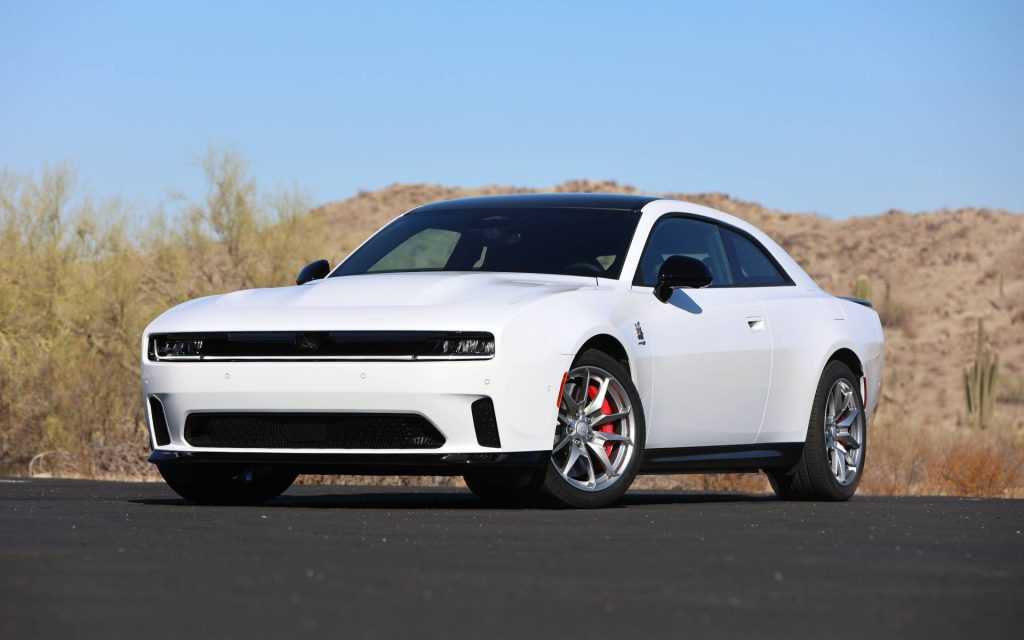
Under the hood, every gas-powered 2025 Charger is equipped with a twin-turbo inline-six engine known as the Hurricane, a powerplant previously seen in the Jeep Wagoneer and Grand Wagoneer.
The Sixpack S.O. version produces a solid 420 horsepower, while the Sixpack H.O. variant ups that output to 550 horsepower. However, the title of most powerful Charger goes to the electric Charger Daytona, which can deliver up to 670 horsepower.
That model is discussed in a separate review. The gasoline-powered Charger pairs its Hurricane engine with an eight-speed automatic transmission and comes standard with all-wheel drive. Once the Charger becomes available for testing, performance and acceleration results will follow.
Inside, the 2025 Charger’s cabin offers a blend of vintage flair and modern sophistication. Its layered dashboard design is directly inspired by late 1960s Charger models, and the automatic transmission features a nostalgic pistol-grip shifter.
Yet the vehicle clearly belongs in the modern era, thanks to digital gauge clusters and customizable ambient lighting. The front bucket seats appear both spacious and comfortable, making them suitable for long drives.
For those who expect to carry more than one additional passenger frequently, the four-door version may be the better choice due to its more generous rear-seat space. Both the coupe and sedan variants offer practical cargo solutions with a rear liftback design instead of a traditional trunk, allowing easy access to the storage space behind the rear seats.
4. Dodge Grand Caravan
The Dodge Grand Caravan is a top choice for families or group travel, offering features tailored for comfort and convenience. One of its standout interior highlights is the “Stow and Go” seating system.
This innovative setup includes retractable second-row seats, which easily fold into the floor, creating a completely flat surface for carrying cargo.
Another memorable feature is “Swivel and Go,” allowing the second-row seats to rotate to face the rear. This configuration accommodates a custom table, enabling up to five passengers to sit around it in a dining-style layout.
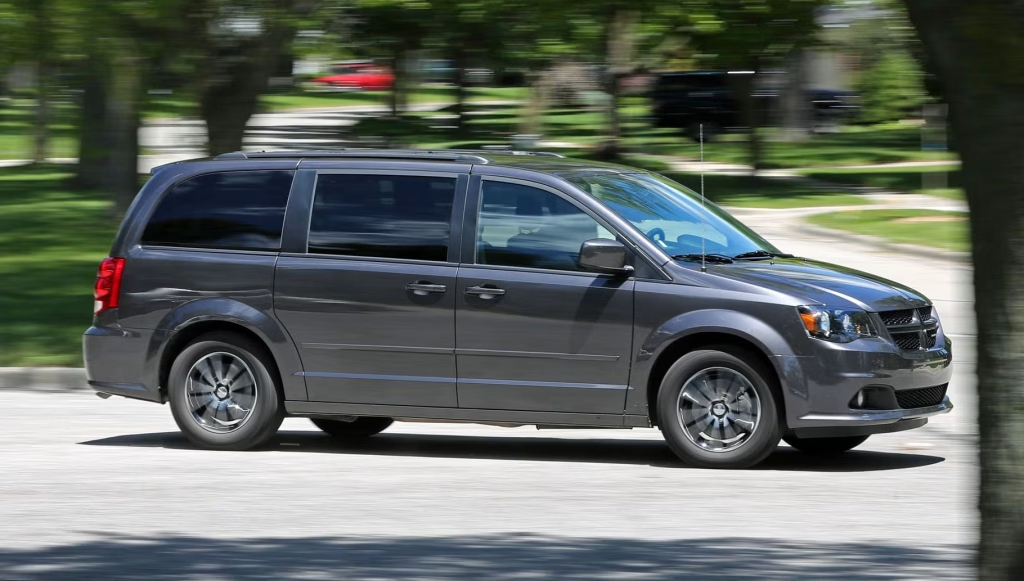
Entertainment is well-covered in the 2010 Grand Caravan, which comes equipped with an advanced audio and video system. Passengers can plug in their headphones and use a remote control to choose their favorite music while on the move.
Under the hood, the 2010 Grand Caravan is powered by robust V-6 engines. The base model features a four-speed automatic transmission that delivers up to 175 horsepower. For more power, the 4.0-liter V-6 engine option produces 252 horsepower.
5. Dodge Journey
With a reliability rating of 7.3/10 according to consumer reports, the 2009 Dodge Journey initially faced some skepticism from critics regarding its engine. However, this durable SUV eventually proved to be dependable.
The Dodge Journey is well-regarded for its fuel efficiency and roomy interior. It offers ample space for up to five passengers, making it a convenient choice for family trips.
When it comes to performance, the 2009 Dodge Journey runs on a 2.4-liter engine that can produce up to 235 horsepower. On the highway, its fuel economy ranges between 21 and 25 miles per gallon.
The 2020 Dodge Journey stands out as the most affordable three-row SUV currently available on the market. Although its design is dated and many of its features are behind the times, it manages to undercut its rivals by several thousand dollars.
Despite the Journey’s subpar driving dynamics, slow powertrain, and lack of modern driver-assistance features, its adaptable interior and user-friendly infotainment system may still attract budget-conscious shoppers.
For 2020, Dodge has reduced the number of trims available on the Journey from three to just two: the SE Value and the Crossroad. Other notable eliminations include the previously available all-wheel drive and the optional V-6 engine that came with a six-speed automatic transmission.
Now, the sole powertrain is a 172-horsepower 2.4-liter four-cylinder engine, mated to a four-speed automatic transmission and front-wheel drive. However, Dodge has added standard rear park assist across all models, and the Crossroad trim now comes with a standard sunroof.
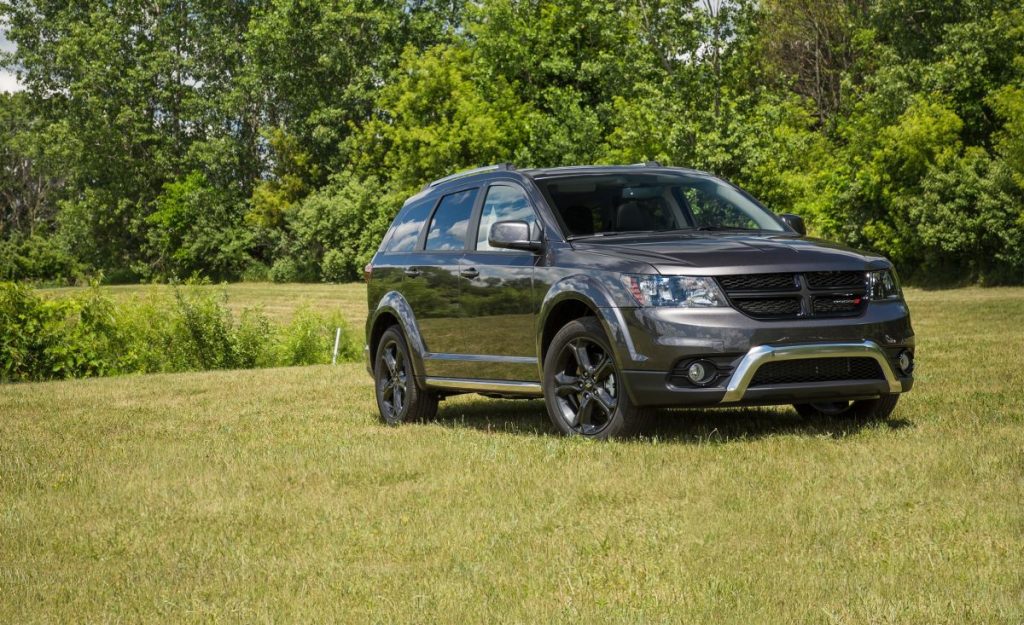
To simplify the options list, Dodge introduced the Popular Equipment Group, which bundles various features depending on the trim level.
On the SE Value, this package includes a six-way power-adjustable driver’s seat, Uconnect with Voice Command and Bluetooth, SiriusXM satellite radio, three-zone climate control, a security alarm, and a leather-wrapped steering wheel and shift knob.
The Crossroad’s version of the Popular Equipment Group adds a universal garage door opener, remote start, heated front seats and steering wheel, navigation, and a six-speaker audio system with a subwoofer. Dodge has confirmed that 2020 will be the final model year for the Journey.
The pricing for the 2020 Dodge Journey starts at $25,170 and can reach up to $30,090 depending on the selected trim and optional features. The SE Value is priced at $25,170, while the Crossroad comes in at $30,090.
Given the removal of the V-6 engine and all-wheel-drive options, the SE Value trim stands out as the better buy from the Journey lineup. With only a few options available and limited benefits from the Popular Equipment Group at this trim level, it’s recommended to forego extras and stick with the basic version of the Journey.
Under the hood, both SE and Crossroad trims are powered by a four-cylinder engine that fails to deliver adequate performance.
Unfortunately, the previously available V-6 is no longer an option, leaving buyers stuck with the underwhelming 172-hp engine. The accompanying four-speed automatic transmission is slow to respond, further hampering the Journey’s real-world driving experience.
While few three-row crossovers are known for being fun to drive, the Journey’s sluggish handling and delayed transmission responses place it near the bottom in terms of driving performance. It struggles in corners due to excessive body roll and vague steering. That said, the soft suspension does help provide a comfortable highway ride.
Fuel economy is another weak point for the Journey. The EPA rates its four-cylinder engine at 19 mpg in the city and 25 mpg on the highway, the lowest among comparable competitors. For context, the 2019 Honda CR-V earned ratings of 26 mpg city and 32 mpg highway, and the 2019 Toyota C-HR achieved 27 mpg city and 31 mpg highway.
Inside, the Journey’s cabin lacks luxury but offers easy-to-use controls. However, fitting passengers into the third row—even children—requires sacrificing legroom in the second row.
The use of low-grade materials such as a plasticky gear shifter and hollow-sounding door panels is especially noticeable on the more expensive Crossroad model. In addition, several upscale features such as a power-adjustable passenger seat, cooled front seats, and heated rear seats are not available, even as options.
Where the Journey does perform well is in terms of practicality. Its interior is easily reconfigurable, and it offers a good number of storage compartments for small items. Though its total cargo capacity is smaller than many rivals, folding down the 50/50-split third-row and the 60/40-split second-row seats does increase usable space.
Along with the usual console storage areas, the Journey also provides a large bin beneath the front-passenger seat cushion and two sizeable underfloor storage compartments in the second row.
6. Dodge Nitro
The Dodge Nitro made its SUV debut in 2007 and was quickly recognized for its eye-catching exterior design. At the time, it was one of the few Dodge models that came in a variety of colors.
Beyond its bold looks, the Dodge Nitro also features a spacious cabin that comfortably fits up to five passengers. If you’re in search of a reliable vehicle for family travel, the 2008 Dodge Nitro is definitely worth considering.
In terms of performance, the 2008 model includes a strong V-6 engine capable of delivering up to 250 horsepower. It is available in three trims: Base SXT, SLT, and R/T.
The 2020 Dodge Journey stands out as the most affordable three-row SUV currently available on the market. Although its design is dated and many of its features are behind the times, it manages to undercut its rivals by several thousand dollars.
Despite the Journey’s subpar driving dynamics, slow powertrain, and lack of modern driver-assistance features, its adaptable interior and user-friendly infotainment system may still attract budget-conscious shoppers.
For 2020, Dodge has reduced the number of trims available on the Journey from three to just two: the SE Value and the Crossroad.
Other notable eliminations include the previously available all-wheel drive and the optional V-6 engine that came with a six-speed automatic transmission. Now, the sole powertrain is a 172-horsepower 2.4-liter four-cylinder engine, mated to a four-speed automatic transmission and front-wheel drive.
However, Dodge has added standard rear park assist across all models, and the Crossroad trim now comes with a standard sunroof. To simplify the options list, Dodge introduced the Popular Equipment Group, which bundles various features depending on the trim level.
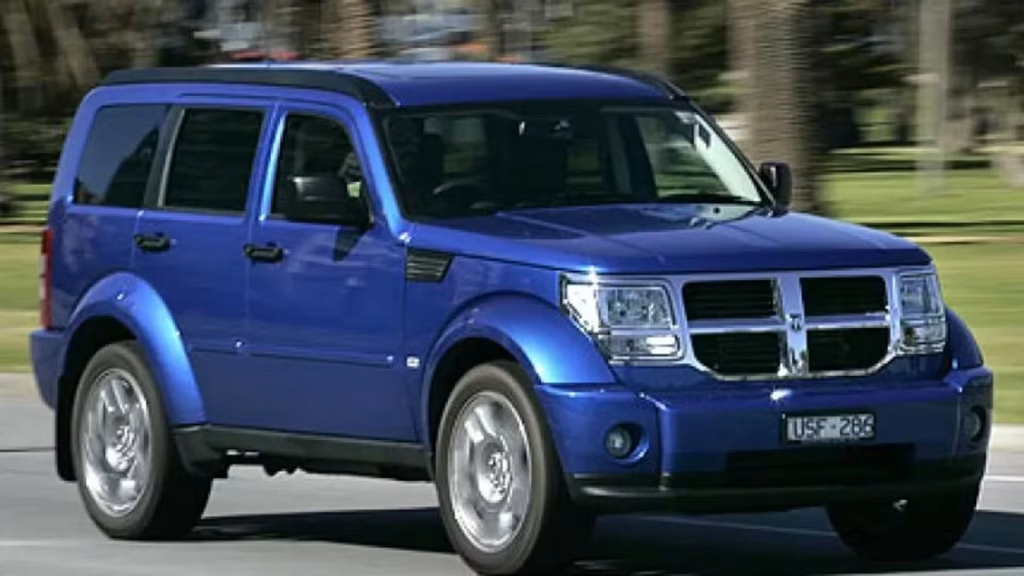
On the SE Value, this package includes a six-way power-adjustable driver’s seat, Uconnect with Voice Command and Bluetooth, SiriusXM satellite radio, three-zone climate control, a security alarm, and a leather-wrapped steering wheel and shift knob.
The Crossroad’s version of the Popular Equipment Group adds a universal garage door opener, remote start, heated front seats and steering wheel, navigation, and a six-speaker audio system with a subwoofer. Dodge has confirmed that 2020 will be the final model year for the Journey.
The pricing for the 2020 Dodge Journey starts at $25,170 and can reach up to $30,090 depending on the selected trim and optional features. The SE Value is priced at $25,170, while the Crossroad comes in at $30,090.
Given the removal of the V-6 engine and all-wheel-drive options, the SE Value trim stands out as the better buy from the Journey lineup. With only a few options available and limited benefits from the Popular Equipment Group at this trim level, it’s recommended to forego extras and stick with the basic version of the Journey.
Under the hood, both SE and Crossroad trims are powered by a four-cylinder engine that fails to deliver adequate performance.
Unfortunately, the previously available V-6 is no longer an option, leaving buyers stuck with the underwhelming 172-hp engine. The accompanying four-speed automatic transmission is slow to respond, further hampering the Journey’s real-world driving experience.
While few three-row crossovers are known for being fun to drive, the Journey’s sluggish handling and delayed transmission responses place it near the bottom in terms of driving performance. It struggles in corners due to excessive body roll and vague steering. That said, the soft suspension does help provide a comfortable highway ride.
Fuel economy is another weak point for the Journey. The EPA rates its four-cylinder engine at 19 mpg in the city and 25 mpg on the highway, the lowest among comparable competitors.
For context, the 2019 Honda CR-V earned ratings of 26 mpg city and 32 mpg highway, and the 2019 Toyota C-HR achieved 27 mpg city and 31 mpg highway.
Inside, the Journey’s cabin lacks luxury but offers easy-to-use controls. However, fitting passengers into the third row—even children—requires sacrificing legroom in the second row. The use of low-grade materials such as a plasticky gear shifter and hollow-sounding door panels is especially noticeable on the more expensive Crossroad model.
In addition, several upscale features such as a power-adjustable passenger seat, cooled front seats, and heated rear seats are not available, even as options.
Where the Journey does perform well is in terms of practicality. Its interior is easily reconfigurable, and it offers a good number of storage compartments for small items. Though its total cargo capacity is smaller than many rivals, folding down the 50/50-split third-row and the 60/40-split second-row seats does increase usable space.
Along with the usual console storage areas, the Journey also provides a large bin beneath the front-passenger seat cushion and two sizeable underfloor storage compartments in the second row.
7. Dodge Hornet
The dynamic Dodge Hornet merges performance, dependability, and efficiency in one modern SUV. Designed to seat five passengers, it is offered in four trims, with the GT Plus being the most favored among buyers.
This SUV delivers fuel economy of 21 miles per gallon in the city and 29 miles per gallon on the highway. Its powerful turbo engine supports an all-wheel-drive system for improved handling and performance.
A key differentiator of the Dodge Hornet is its plug-in hybrid system, which significantly lowers fuel usage. This technology enables you to switch to an electric vehicle mode, making short trips possible without needing to refuel.
As one of the oldest and most esteemed automakers in the U.S., Dodge has a longstanding reputation for producing high-quality, reliable SUVs.
Whether you’re considering the iconic Durango, the trustworthy Journey, or the Grand Caravan for family adventures, Dodge offers dependable models at reasonable prices.
There’s no denying that the Dodge Hornet closely mirrors the Alfa Romeo Tonale in design and engineering. However, this resemblance isn’t necessarily a drawback.

The Hornet offers essentially the same features—sharp handling and standard all-wheel drive—wrapped in a stylish, compact design, but at a more affordable price than its Alfa counterpart. While the Tonale comes exclusively with a plug-in hybrid powertrain, that setup is also available in the Hornet R/T.
The Hornet GT, on the other hand, features a more straightforward powertrain: a turbocharged four-cylinder engine that produces 268 horsepower, giving it nearly comparable acceleration to the hybrid.
However, like the Tonale, the Hornet’s compact dimensions result in a relatively tight back seat and limited cargo capacity when measured against other models in its class. Additionally, the gas-only Hornet doesn’t benefit from the efficiency gains of a hybrid system, and as a result, its fuel economy is only average.
Still, the Hornet offers an engaging driving experience that enthusiasts will appreciate. That said, it falls short of being as well-rounded as competitors like the Honda CR-V or Mazda CX-50.

